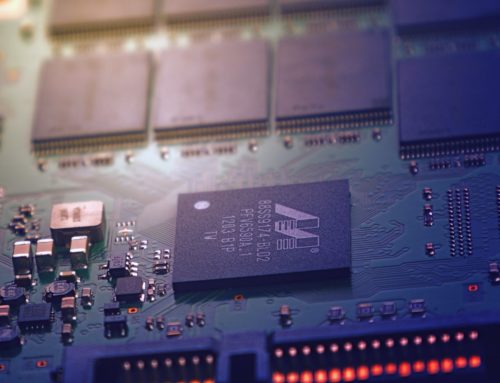Title: Unveiling the Enigmatic Stratum: Can a Digital Reality Be Jacked Directly Into Your Brain?
Introduction:
In the realm of imagination, science fiction has relentlessly tantalized us with mesmerizing possibilities that transcend our present-day limitations. From holographic projections to neural interfaces, these conceptual musings bring to life worlds that exist far beyond the ordinary. One such captivating notion that continues to pique our curiosity is the idea of directly connecting our brains to a digital reality, seamlessly merging the virtual and physical realms. While this futuristic concept may seem akin to the stuff of dreams, an ever-evolving landscape of technological advancements now begs the question: can we truly bypass our senses and enter a digital stratum wired directly into our minds?
Throughout history, humans have strived to enhance their experiences, break barriers, and explore uncharted territories. From the very first steps on the moon to the development of the internet, our pursuit of innovation knows no bounds. Yet, the prospect of connecting our consciousness to a digitized dimension raises a panoply of questions and concerns. Are our brains capable of seamlessly integrating with a virtual plane? Will we lose ourselves in this fabricated alternate reality, blurring the line between what is real and what is intangible? And perhaps most importantly, what undeniable marvels and formidable risks lie in wait for those who dare to venture into this uncharted digital frontier?
In order to unravel the mysteries entwined within this unorthodox concept, deep-diving into the intertwining realms of science, technology, psychology, and philosophy becomes essential. The convergence of these disciplines unravels the enigma surrounding direct brain-to-digital reality interfaces and instigates a search for answers that will acquaint us with the very fabric of our existence.
Within this article, we will embark upon an odyssey of inquiry. As we navigate the vast sea of possibilities, we shall scrutinize the technological advancements that serve as stepping stones towards realizing this audacious vision. Simultaneously, we shall navigate the vicissitudes of ethical dilemmas and ponder the consequences of plunging ourselves headfirst into an augmented realm. Fairly and impartially, we shall traverse the grounds of potential benefits and dire repercussions.
As the veil between science fiction and reality grows increasingly thinner, it is essential to delve deeper into this tantalizing concept — to discern the validity that exists beneath its beguiling allure. Only by understanding the intricacies of this interconnected ecosystem can we hope to shape a future where this innovative concept adds value to our lives, rather than obliterating our connection to what it means to be truly human.
So, dear reader, prepare yourself for a thought-provoking expedition into the ethereal terrain of a digitized existence. With an open mind, a critical lens, and an insatiable curiosity, we shall venture forth into this uncharted stratum where questions and possibilities intertwine. Let us embark on this journey of discovery together, as we seek to unravel the enigmatic query: Can a digital reality be jacked directly into our brain?
Table of Contents
- 1. Exploring the Boundaries: Can We Hack the Human Brain and Enable a Digital Reality Experience?
- 2. Mastering the Mind-Machine Interface: The Potential for Direct Neural Connections to Virtual Worlds
- 3. Unlocking the Secrets of Neural Interface: Towards a Future of Brain-to-Computer Integration
- 4. From Science Fiction to Science Fact: Is Direct Brain Jacking the Next Frontier in Virtual Reality?
- 5. Rewiring Consciousness: Examining the Feasibility of Merging Digital Realities and Human Brains
- 6. Bridging the Gap: Unraveling the Possibilities and Ethical Implications of Brain-Computer Interfaces in Virtual Realms
- 7. The Neurological Revolution: Could Direct Brain Connectivity Replace Traditional Virtual Reality Hardware?
- 8. A Glimpse into the Future: Can We Turn Dreams of a Digital Reality Jacked into Our Brains into Reality?
- Q&A
1. Exploring the Boundaries: Can We Hack the Human Brain and Enable a Digital Reality Experience?
As technology continues to advance at an unprecedented pace, the realm of possibilities seems to know no bounds. One intriguing idea that has captivated the minds of scientists and innovators is the concept of hacking the human brain to enable a truly immersive digital reality experience. Imagine being able to effortlessly transport yourself to any location, interact with virtual objects as if they were real, or even experience emotions and sensations that surpass our current understanding. While this may still sound like the stuff of science fiction, recent breakthroughs in neuroscience and cutting-edge technologies are steering us closer than ever to uncovering the potential of such an extraordinary feat.
Researchers around the world are delving deep into the intricate workings of the human brain, unraveling its secrets and mapping its complex network of neurons. The aim is to decipher the codes that govern our thoughts, memories, and perceptions, and harness this knowledge to create a digital reality unlike anything we’ve encountered before. By developing non-invasive brain-computer interfaces (BCIs) that can read and interpret neural activity, scientists have already made strides in allowing users to control digital devices with their minds alone. Could we soon be on the brink of a future where our brain’s connection to the digital world is seamless, blurring the line between what is real and what is virtual? Only time will tell, but one thing is for certain: the exploration of these boundaries holds the promise of opening up a new era of human experience, where the limitations of the physical world become mere whispers in the wind.
2. Mastering the Mind-Machine Interface: The Potential for Direct Neural Connections to Virtual Worlds
The mind-machine interface (MMI) has long been a subject of fascination and scientific exploration. Over the years, researchers have made significant strides in developing technologies that enable direct neural connections with virtual worlds. This groundbreaking advancement holds immense potential for unlocking new possibilities in various fields, from gaming to medical therapy and beyond.
One of the key benefits of mastering the MMI is the ability to dive deeper into virtual worlds with unprecedented immersion. By directly accessing the neural pathways of the brain, individuals can experience virtual realities with all their senses fully engaged. From breathtaking landscapes to intricate details, every aspect of these digital realms can be felt, seen, and even smelled, providing a truly lifelike experience. This revolutionizes the gaming industry, blurring the lines between reality and the virtual. Moreover, the potential goes far beyond leisure; it can be transformative for medical applications, allowing patients to undergo therapy in simulated environments that vastly enhance their healing process.
- Imagine stepping into a virtual world where you can learn new skills at an accelerated rate. With direct neural connections, individuals can acquire knowledge at an unprecedented speed, mastering new languages, honing artistic abilities, or gaining expertise in a particular field. This technology has the potential to revolutionize education, making learning a seamless and immersive experience.
- The MMI also has profound implications in the field of neuroscience. Researchers can gain a deeper understanding of the intricate workings of the brain by monitoring neural activity in real-time during virtual experiences. This wealth of data offers insights into cognitive processes, emotions, and behavior, leading to breakthroughs in mental health treatments, neurology, and beyond.
While the path to fully harnessing the potential of the mind-machine interface is still unfolding, it is clear that we are on the precipice of a new era. As scientists continue to push boundaries and refine these technologies, the possibilities seem endless. Our ability to directly connect our minds to virtual worlds opens up a world of opportunities, limited only by our imagination. What marvels and challenges lie ahead as we bridge the gap between mind and machine? Only time will tell.
3. Unlocking the Secrets of Neural Interface: Towards a Future of Brain-to-Computer Integration
In recent years, researchers and scientists have made significant strides in understanding the complex workings of the brain and harnessing its immense potential. Neural interface technology, also known as brain-computer interface (BCI), has emerged as a groundbreaking field that aims to connect the human brain directly to computers, opening up a gateway to a future of unimaginable possibilities.
Through the use of advanced algorithms and innovative hardware, scientists are developing methods to decode and interpret the electrical signals generated by our brains, enabling seamless communication between humans and machines. This transformative technology holds the promise to revolutionize not only healthcare but also fields such as communication, entertainment, and education. Imagine effortlessly controlling your devices with your thoughts, typing on a keyboard just by thinking, or even directly experiencing virtual realities through your mind’s eye.
- Advancements in neural interface technology have the potential to greatly benefit individuals with severe disabilities by providing them with a means to communicate and interact with the world around them.
- The integration of neural interfaces with artificial intelligence (AI) can enhance cognitive abilities and enable humans to access vast amounts of information and knowledge instantly.
- Further exploration of brain-to-computer integration may also lead to the development of neuroprosthetics, allowing for the restoration of sensory or motor functions in individuals with impairments.
As scientists continue to unlock the secrets of neural interface, we move closer to a future where the boundaries between humans and machines become increasingly blurred. This convergence holds unparalleled potential to redefine what it means to be human, offering opportunities for enhanced creativity, communication, and understanding. While many questions and ethical considerations surround this emerging technology, one thing is certain – the journey towards brain-to-computer integration is an awe-inspiring endeavor that holds immense promise for the future.
4. From Science Fiction to Science Fact: Is Direct Brain Jacking the Next Frontier in Virtual Reality?
As technology continues to advance at an astonishing pace, it seems that the boundaries between science fiction and science fact are becoming increasingly blurred. One area where this is particularly evident is in the realm of virtual reality. From its humble beginnings as a mere concept in science fiction novels and movies, virtual reality has quickly evolved into a fully immersive experience that can transport us to new and exciting worlds in the blink of an eye.
But what if the immersion could be taken even further? What if we could bypass the need for clunky headsets and controllers, and instead connect directly with the virtual world using our brains? This futuristic idea, known as direct brain jacking, is a concept that has captivated scientists, researchers, and avid gamers alike. By interfacing directly with our brains, virtual reality could reach unprecedented levels of realism and immersion. Imagine being able to experience the sights, sounds, and even emotions of a virtual world as if they were happening in real life. The potential applications of direct brain jacking are truly mind-boggling.
- Enhanced empathy: With direct brain jacking, we could potentially experience the world through someone else’s eyes, fostering a deeper understanding and empathy for others.
- Seamless control: Instead of using a controller, we could manipulate the virtual environment effortlessly with our thoughts, making interactions more intuitive and natural.
- Medical possibilities: Direct brain jacking could have groundbreaking implications in the fields of rehabilitation and therapy, aiding in recovery and providing new ways to treat mental disorders.
While direct brain jacking may sound like science fiction, scientists have already made significant strides in the field of brain-computer interfaces. Although there are still many technical and ethical hurdles to overcome, the idea of connecting our brains directly to virtual reality may not be as far-fetched as it seems. As technology continues to push the boundaries of what we once thought was possible, who knows what the future holds for virtual reality and the potential for direct brain jacking.
5. Rewiring Consciousness: Examining the Feasibility of Merging Digital Realities and Human Brains
In the age of rapid technological advancements, the concept of merging digital realities with human consciousness has evolved from science fiction to a potential reality. Researchers and innovators are now exploring the feasibility of rewiring the very essence of our consciousness, revolutionizing the way we experience and interact with the world around us.
The idea behind this groundbreaking endeavor is to seamlessly integrate digital information into our minds, essentially creating a hybrid form of existence. By connecting our brains to digital platforms and virtual environments, we may unlock limitless possibilities for learning, communication, and creativity. This fusion of digital and human realities could blur the lines between what is real and what is simulated, opening up new avenues for exploration and self-expression.
6. Bridging the Gap: Unraveling the Possibilities and Ethical Implications of Brain-Computer Interfaces in Virtual Realms
In the ever-evolving landscape of technology, brain-computer interfaces (BCIs) hold immense promise for taking virtual reality (VR) experiences to unprecedented levels. By directly connecting the human brain with VR environments, BCIs have the potential to bridge the gap between our physical and digital worlds. This article delves into the wondrous possibilities and ethical considerations surrounding BCIs in virtual realms, offering a glimpse into a future where the boundaries of perception blur and new horizons are revealed.
Exploring Boundless Potential
BCIs in virtual realms open up a wide array of possibilities that once resided solely in the realm of science fiction. Imagine controlling VR simulations with a mere thought or experiencing sensations and emotions as if they were real. The ability to seamlessly merge our consciousness with artificial constructs could unlock never-before-seen levels of immersion and interactivity.
BCIs may enable users to:
- Manipulate virtual objects with precise mental commands, revolutionizing gaming and design industries.
- Experience physical sensations in VR, such as the feeling of a breeze on the skin, enhancing the realism of immersive experiences.
- Communicate without uttering a word by transmitting thoughts directly into text or speech in virtual communication platforms.
However, as we traverse this uncharted territory, ethical implications naturally arise. The ethical considerations surrounding BCIs in virtual realms are as complex as the technology itself. Questions regarding privacy, consent, and the potential for addiction or manipulation demand careful examination to ensure that this powerful technology serves humanity’s best interests.
7. The Neurological Revolution: Could Direct Brain Connectivity Replace Traditional Virtual Reality Hardware?
Advancements in technology have propelled the field of virtual reality (VR) to incredible heights, with traditional hardware leading the way. However, a neurological revolution is on the horizon, with the potential to surpass existing VR experiences. The emergence of direct brain connectivity (DBC) has sparked excitement and speculation among tech enthusiasts who wonder if it could replace the need for traditional VR hardware.
Imagine a world where you can fully immerse yourself in a virtual environment without the need for clunky headsets or handheld controllers. With DBC, the possibilities seem limitless. By directly connecting to the brain, this revolutionary technology has the potential to tap into our thoughts, emotions, and senses. Gone are the days of limited movement or delayed responses in VR; instead, users can experience a seamless and deeply immersive virtual world.
- Mind-reading: DBC technology could allow VR systems to interpret and respond to our thoughts, eliminating the need for external input devices. Simply thinking about an action within the VR environment would trigger the desired response.
- Haptic feedback: Through DBC, VR experiences could provide realistic tactile sensations, allowing users to feel the texture of objects or even experience physical interactions with virtual beings.
- Enhanced visuals: DBC has the potential to bypass the limitations of traditional displays, creating visuals directly within the mind’s eye. The level of detail and immersion could be unparalleled.
While these possibilities sound like something out of a science fiction novel, they are becoming increasingly plausible. However, there are still many challenges to overcome, including the ethical implications of accessing and manipulating a person’s thoughts. Nonetheless, the exploration of direct brain connectivity in VR marks an exciting turning point in the evolution of technology, offering a glimpse into a future where our imagination is the only limit.
8. A Glimpse into the Future: Can We Turn Dreams of a Digital Reality Jacked into Our Brains into Reality?
As technology continues to advance at an unprecedented pace, the concept of merging the digital world with our minds is no longer confined to science fiction. With the exponential growth of virtual reality (VR) and augmented reality (AR), the dream of a digital reality jacked into our brains is becoming tantalizingly close. Imagine a future where we can seamlessly interact with digital information and sensory experiences without the need for external devices or screens. It’s a journey into uncharted territory, but experts believe that with the right advancements, this once-fantastical notion could become a reality.
In this brave new future, our brains could be directly connected to a digital network, allowing for unimaginable possibilities. We could navigate an immersive virtual world with our thoughts, or instantly access information, memories, and skills with a simple mental command. Just as the internet revolutionized communication and access to knowledge, a brain-to-digital interface could revolutionize the way we perceive and interact with reality.
- Enhanced Learning: A brain-connected digital reality could provide us with instant access to vast amounts of information, revolutionizing the way we learn. From languages to scientific concepts, we could absorb knowledge at an unprecedented rate.
- Infinite Digital Experiences: With a digital reality intrinsically linked to our brains, we could explore virtual worlds, engage in realistic simulations, and experience entertainment like never before.
- Medical Breakthroughs: Imagine a future where neurological disorders could be treated by rewiring faulty connections in our brains or where mental health issues could be addressed with precision and finesse.
As we delve deeper into the realms of technology, one question remains at the forefront of our collective curiosity: can a digital reality be jacked directly into our brains? Today, we have explored the possibilities, contemplated the ethics, and pondered the mind-bending implications that such a leap in neuroscience could bring.
In this extraordinary journey, we have embarked upon a quest that stretches the boundaries of our imaginations. We have confronted the convergence of humanity and technology, dissecting the enigmatic allure of a digital reality seamlessly integrated within our very minds.
While the notion of a virtual world pulsating with vibrant colors and dazzling experiences may excite the senses, we cannot ignore the profound moral and existential questions that arise from such a radical shift. As the soul of sentient beings intertwines with intricate algorithms and lines of code, we must cautiously tread the path between innovation and caution.
However, we must also marvel at the wonders that await us in this uncharted realm. A digital reality connected directly to our cognitive faculties offers the promise of untold possibilities: enhanced learning, heightened empathy, and the liberation of creativity like never before.
Yet, as we strive forward into uncharted technological landscapes, we must remain wary of the inherent risks. Such a profound fusion of biology and machinery, like yin and yang dancing in harmonious union, carries with it the potential for unforeseen consequences, manipulation, and loss of what it truly means to be human.
The choice, then, rests prominently on our collective shoulders. We stand at a precipice, gazing into the abyss of infinite digital horizons, contemplating the implications of a future wherein reality intertwines with the virtual.
Will we surrender to the allure of a digital symphony, allowing our minds to be consumed by an alternate, manufactured existence? Or, will we navigate this brave new world with wisdom and discernment, harnessing the boundless potential to elevate ourselves and redefine our human experience?
As the curtain closes on this thought-provoking exploration, we are left with an undeniable truth: the future is calling, beckoning us to shape our destiny amidst the ever-advancing tides of technology. Whether we traverse this path with sincerity or trepidation, the digital reality that awaits is infinite, pulsating with both wonder and peril. It is now up to us to wield this power responsibly and ensure that the essence of our humanity remains at the core of all that we become.




Leave A Comment